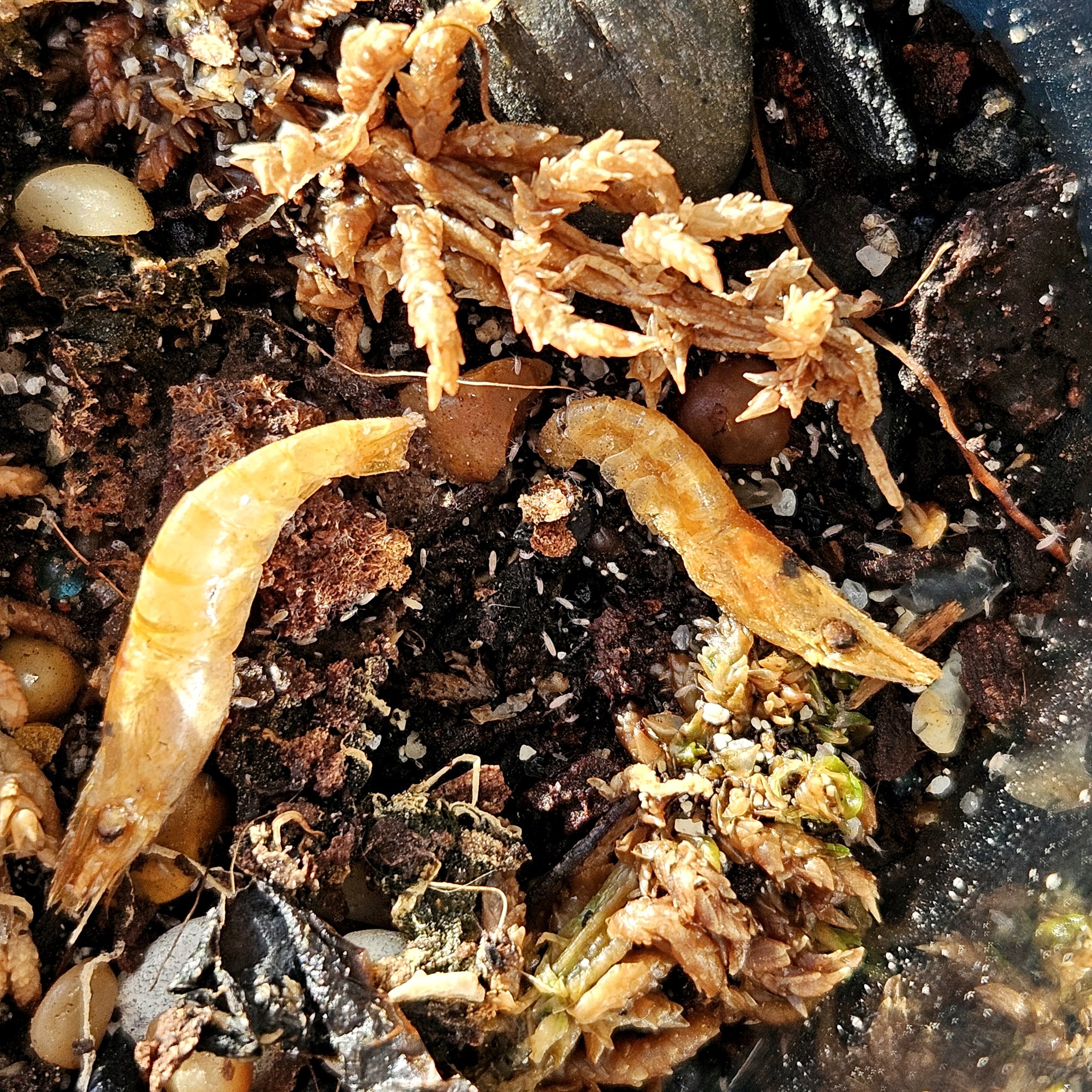Powder Orange Isopods
Porcellionedes pruinosus
Powder orange isopods are a medium sized isopod that is native to ——- and . They are well loved as a clean up crew due to its rapid reproduction rate and striking coloration.
For keeping a colony of Powder orange on their own and not as a clean up crew in a bioactive tank, it is recommended to use no smaller than roughly 5G / 18-20L , or an enclosure over 12 in / 30cm long and 8 in / 20cm wide. Make sure it is deep enough for a generous amount of substrate and leaf litter, as well as some cork bark, lotus pods, or other natural detritus.
Because of their smaller size, speed and adaptability to a wide range of humidity and temperature ranges, powder oranges make a great isopod choice for a clean up crew. The small size and speed allow them to hide from or evade some predatory tank mates, and their rapid reproduction rate helps to compensate for the ones that your critter may nibble on along the way.
Able to withstand a fairly wide range between 65-85F, 19- 29C. Ideally if keeping in their own enclosure mid 70 F is ideal, or about room temperature. In enclosures with other creatures they will naturally seek out temperature zones as necessary.
Leaf litter, dried shrimp, fish flakes, Vegetables & fruit, and, calcium supplement like eggshells or cuttle bone.
Vegetables can be fresh or frozen, and kitchen scraps are a great way to feed your isopods (pre-cooked, unseasoned Vegetables or fruit). Have some leftover pepper or spinach from dinner prep? Toss it in the pod tank and remember to clean up any uneaten food within a day or two to avoid mold or unpleasant smells.
In reptile / amphibian tanks your pods should scavenge for detritus well enough, but you can consider tossing a scrap or two somewhere your critter cant reach it, like under their water dish!
Isopods do not generally require any special lighting requirements as they are nocturnal and prefer darkness, however it is ideal to allow a day & night cycle to mimic their natural environment. LED lighting is a good option to avoid overheating small enclosures or drying out soil to intensely from any heat cast-off.
Adaptable to a fairly wide humidity range but prefer higher humidity (70-80%), and you should provide a gradient in the container, hence Why tank minimums can be important. In other enclosures they will seek out moisture when needed and can survive in fairly wide range of set ups from tropical to semi arid as long as there is a moisture retaining area for them, such as sphagnum moss or a moist area under a plant or water dish.

















